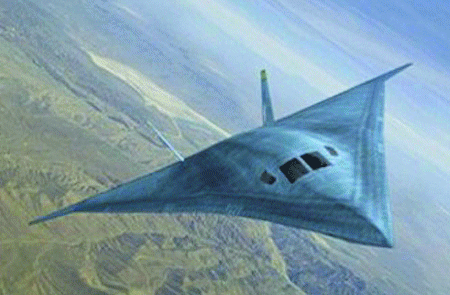Across a broad spectrum, the future US Air Force is being shaped by technology development at the Air Force Research Laboratory
Stewart Penney/WRIGHT-PATTERSON AFB
As the heart of the US Air Force's technology acquisition effort, the Air Force Research Laboratory (AFRL) is driving towards providing capabilities that will serve the expeditionary warfighter in the near-, medium- and long-term.

Based at Wright-Patterson AFB, near Dayton, Ohio, AFRL was formed three years ago by the consolidation of four separate labs. It has 10 directorates around the USA developing technologies for tomorrow's aerospace force.
In the fiscal year just ended, AFRL received $1.3 billion in funding from the US Government and $1.1 billion from industry. Its programmes are focused on near, medium and far term requirements, many of which combine the efforts of several directorates, including Air Vehicles (VA), Sensors (SN), Propulsion (PR) and Materials &Manufacturing (ML), all based at Wright-Patterson.
Near-term work includes sustaining the effectiveness of the USAF's present manned fleet while pursuing the Unmanned Combat Air Vehicle (UCAV) programme in conjunction with the Defence Advanced Research Projects Agency and Boeing, which recently rolled out the first of two X-45 UCAV demonstrators.
In the medium-term, AFRL is working on the Sensor Craft, an unmanned intelligence, surveillance and reconnaissance platform. Far term work includes swarming unmanned air vehicles (UAVs), the Space Operating Vehicle (SOV) and future strike technologies. These programmes in particular require the efforts of several directorates.
Each directorate is tasked with mapping technologies onto programmes. A never-ending element of the Air Vehicles directorate's work is sustainment - ensuring the USAF's in-service fleet remains effective, and that maintenance cost increases for ageing structures and systems are minimised.
One of the Sensors directorate's principal tasks is to produce a network so that "everybody has the same view". Without every commander having the same intelligence picture, command and control becomes muddled and precision engagement - a USAF operational priority - becomes difficult.
The Propulsion directorate, its long-running and extremely successful Integrated High Performance Turbine Engine Technologies initiative winding down, is gearing up to launch its successor, the Versatile Affordable Advanced Turbine Engine programme.
The Materials and Manufacturing Process directorate, tasked with providing not only materials but also methods of manufacturing and supporting them, is finding ways to ensure the US industrial base can continue to supply the USAF's needs where it is no longer the major customer for some industries.
Source: Flight International























